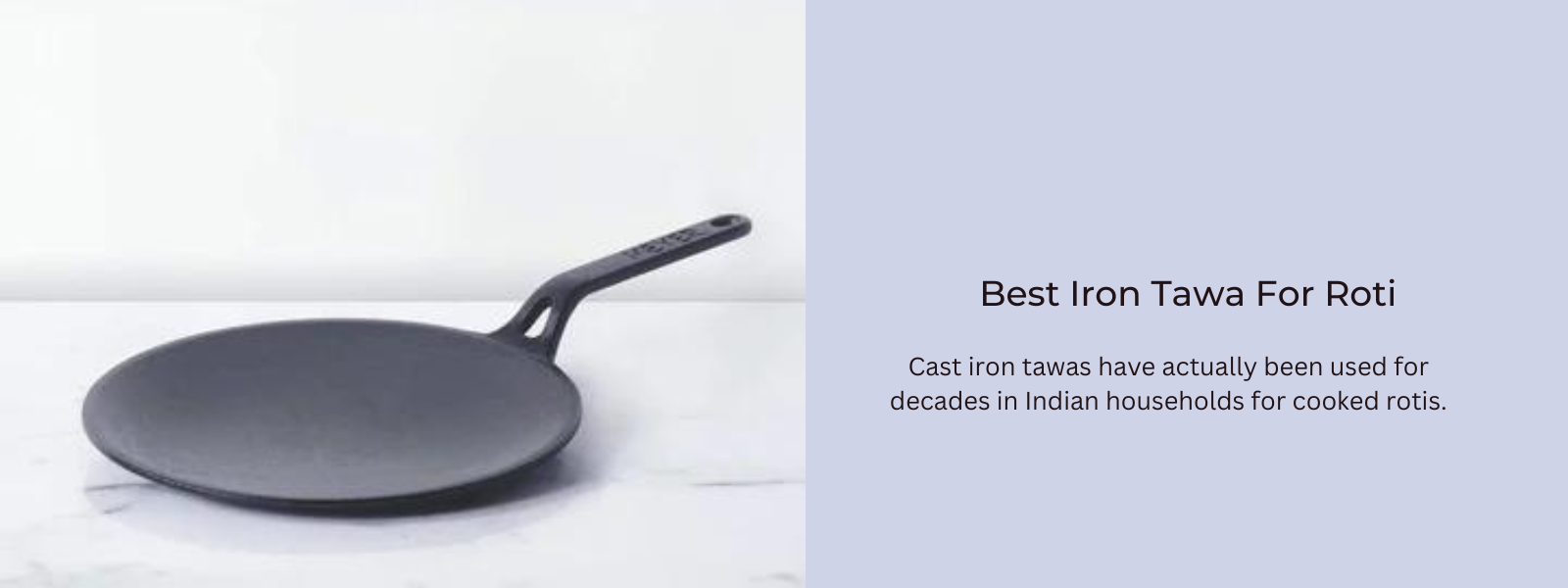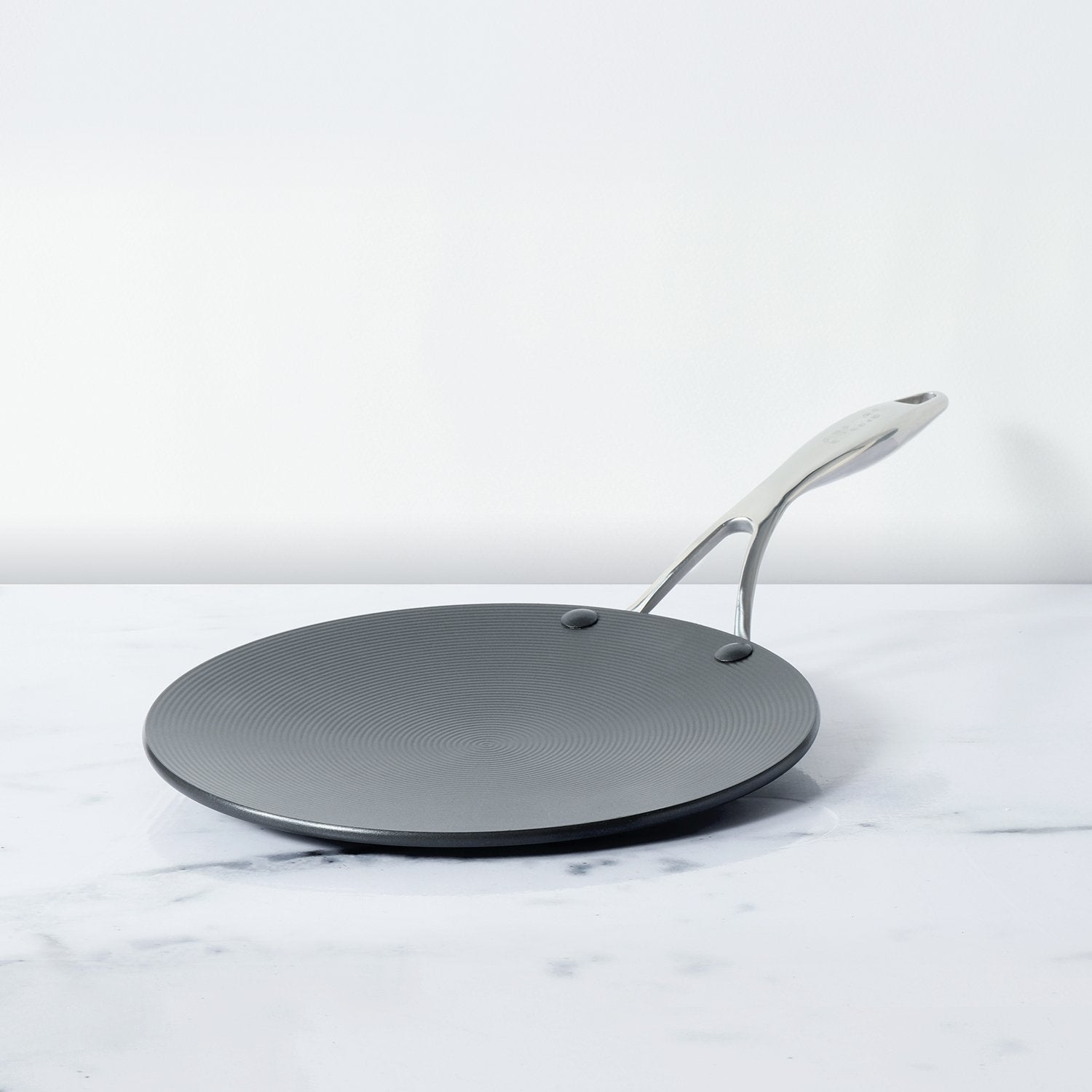In Indian cooking, a "roti tava," also known as a "roti pan" or "chapati tawa," is an essential and commonly used kitchen utensil. It is specifically designed for making rotis, which are thin, round, unleavened flatbreads that are a staple in Indian cuisine.
Table of Contents
- 1. What is Roti Tava?
- 2. Design and Features of Roti Tava:
- 3. Purpose of Roti Tava:
- 4. Usage of Roti Tava:
- 5. How To Use A Roti Tava?
- 6. Cultural Significance of Roti Tava:
- 7. Difference Between A Flat And Concave Roti Tava:
- 8. Flat Roti Tava:
- 9. Concave (Curved) Roti Tava:
- 10. Choosing Between A Flat And Concave Roti Tava:
What is Roti Tava?
A roti tava, also known as a chapati tawa, is a round and flat cooking pan commonly used in Indian cuisine to make rotis, thin and unleavened Indian flatbreads. The tava typically has a smooth surface, often made of materials like cast iron, aluminum, or stainless steel, and is heated on a stove or burner. The roti dough is rolled into flat circles and then cooked directly on the hot tava, resulting in soft and puffy rotis that are a staple in Indian meals.
Design and Features of Roti Tava:
- A roti tava is a flat and round cooking pan with a smooth surface, typically made from materials like cast iron, aluminum, or stainless steel.
- It lacks raised edges, allowing easy access to the entire surface for rolling and cooking the rotis.
Purpose of Roti Tava:
- The primary purpose of a roti tava is to cook rotis (also known as chapatis or phulkas), which are made from a simple mixture of wheat flour, water, and sometimes a pinch of salt.
- Rotis are cooked directly on the hot tava, with no oil or minimal oil used during cooking.
- While a roti tava is primarily used for making rotis, it can also be used to cook other types of Indian flatbreads like parathas and naans.
Usage of Roti Tava:
- The roti tava is heated over a stove or burner until it reaches the right temperature. A few drops of water sprinkled on the surface should sizzle and evaporate.
- A portion of the roti dough is rolled into a flat, round shape and placed onto the hot tava.
How To Use A Roti Tava?
- As the roti starts to cook, small bubbles or air pockets form on the surface. At this point, the roti is flipped over.
- The roti is pressed gently using a clean cloth or a spatula to encourage it to puff up. This puffing action is characteristic of well-cooked rotis.
- Once both sides are cooked, the roti is removed from the tava and often brushed with ghee or butter before being served.
Cultural Significance of Roti Tava:
- Rotis are a fundamental part of Indian cuisine, enjoyed as a staple food in various regions and households.
- The process of making rotis on a roti tava is a culinary skill that has been passed down through generations, and it plays a significant role in Indian cooking traditions.
Difference Between A Flat And Concave Roti Tava:
The choice between using a flat or concave roti tava in Indian cooking is one that can be made according to one's personal tastes as well as the sort of flatbreads that are most frequently prepared. Both types of roti tavas have their merits. Let's look at the distinguishing features of each category:
Flat Roti Tava:
- Design: A flat roti tava has a completely flat surface without any curvature.
- Advantages:
- As a result of the increased surface area, you'll be able to cook rotis of a greater diameter or more than one at the same time.
- It's versatile and can be used for cooking various flatbreads, including rotis, parathas, and more.
- The lack of curvature allows easy access to the entire cooking surface for rolling and flipping flatbreads.
Concave (Curved) Roti Tava:
- Design: A concave roti tava has a slight curvature, with raised edges and a depressed center.
- Advantages:
- It's specifically designed for making rotis and other similar flatbreads.
- The curvature allows better control while cooking rotis, preventing them from sliding off the surface.
- The center depression collects any excess oil or ghee used during cooking, helping in achieving soft and evenly cooked rotis.
- The curvature facilitates the puffing of rotis, which is characteristic of well-cooked rotis.
Choosing Between A Flat And Concave Roti Tava:
- Rotis vs. Other Flatbreads: If you primarily prepare rotis and similar unleavened flatbreads, a concave roti tava is a dedicated tool for this purpose and can enhance your roti-making experience.
- Versatility: If you make a variety of flatbreads beyond rotis, a flat roti tava could be more versatile, allowing you to prepare different types of flatbreads with ease.
- Personal Preference: Some people have a personal preference for the more conventional way of creating rotis, which involves the use of a concave tava due to the unique design and properties of this type of cooking surface.
- Space and Storage: Take into account the amount of free space you have in your kitchen as well as how the design of the tava will interact with the various storage options you have.
Ultimately, the choice between a flat and concave roti tava depends on your cooking habits, preferences, and the range of flatbreads you prepare. Both types of tavas can yield delicious results, so consider what aligns best with your cooking needs.











Leave a comment